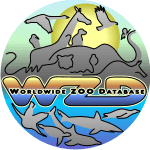| |
 In
the Beginning In
the Beginning
The National Park in
Ramat Gan was established in 1951 by Ramat Gan mayor, Mr. Avraham
Krinitzi, as part of a plan to build a green belt around the city whose
name means ‘Garden Heights’. Two years later, a small petting zoo was
built in the park. It was supervised by Mr. Zvi Kirmeier, manager of the
National Park, who later became General Manager of the Safari. In 1970,
Mr. Kirmeier mentioned to Dr. Israel Peled, the mayor of Ramat Gan at
the time, that Mr. Krinitzi was negotiating with Carr Hartley, wild
animal dealer in Kenya, to develop an African nature reserve in Ramat
Gan. The mayor was excited about the plan and so the idea was born to
build a safari park on half of the National Park.
Inspired by Mr. Kirmeier,
the concept was to create a large open area in which a wide range of
African herbivorous animals roam freely. At the time, it was an
innovative idea in the world, introduced by the Chipperfield
Organization Lions of Longleat in the UK. Evidence of this unique
concept is still seen today: mixed herds of animals roaming around,
minimal intervention by the keepers in the animals’ natural behavior,
and small distances between the visitors and the animals.
Labor Pains
During the development
and construction of the “New African Safari”, the mayor and park manager
joined an expedition to Africa to bring small herbivorous animals from
West Africa back to the park. However, on seeing the savannah grasslands
and the large variety of animals, they changed their goal. At the end of
this adventure, they returned to Israel with a small elephant, two
giraffes, ostriches, impalas, gnus, and other animals. In 1973, a
massive transport of two hundred animals arrived at the Port of Eilat
and they were placed into quarantine. For the first time ever in Israel,
a special quarantine enclosure was built for this purpose. Despite the
doubts, the animals acclimatized well to the conditions in Israel. The
opening of the Safari, originally planned for 1973, was postponed
because of the Yom Kippur War. During Passover in 1974, the “African
Safari” opened its gates to the public and became a popular recreation
spot.
Towards the end of the
70’s, the municipality of Tel Aviv decided that the tiny old Tel Aviv
Zoo was no longer suitable for animals or visitors. The Tel Aviv Zoo was
built in 1939 and was the first zoo in Israel. The zoo was situated on
valuable real estate in a small park located in a residential
neighborhood. The noise and smell of the animals and the crowding of the
zoo visitors created an environmental nuisance to the residents of the
area. The small area and the type of cages were not suitable to the
concept of an open modern zoo and the animals’ needs. Today, the Tel
Aviv Zoo's space is occupied by a shopping center and a residential
tower. The decision to close the Tel Aviv Zoo came fortuitously just
when there was interest in expanding the Zoological Center in Ramat Gan.
It was decided to combine the two animal collections, on the initiative
of the mayors of Tel Aviv and Ramat Gan, Mr. Shlomo Lahat and Dr. Israel
Peled. The new zoo within the Safari was designed by architects Miller,
Blum and Lederer. A comprehensive survey was made, including trips to
many zoos in Europe. Professor Lothar Dietrich, director of the Hannover
Zoo in Germany acted as a consultant. The infrastructure for the new zoo
and its enclosures covered approximately 150,000 sq. meters and was
built with the purpose of improving the living conditions of the animals
by building spacious, open enclosures. It cost around 2.5 million US
dollars.
In October 1980, the zoo
in Tel Aviv closed and the complicated effort of transferring the
animals to their new home was undertaken. At this stage, the Safari got
its new name: The Zoological Center Tel Aviv – Ramat Gan.
Today, the Safari
occupies 250 acres and has the largest animal collection in the Middle
East, and is unique in the world because of the large herds of mixed
species of African animals that roam the spacious African Park. As the
concept of zoos changes around the world, the plan is to create new,
open enclosures for the animals, contributing to the animals’ welfare
and natural behavior and, in addition, providing visitors with a more
naturalistic experience.
The Safari participates
in international programs for endangered species. It is a partner in
both breeding and reproduction programs and in research projects for
animals, and is constantly expanding activities by educating the public.
Animal Success Stories:
1974 – Yossi, the first ‘Sabra’ African elephant was born, now an
internationally known breeding bull
1978 – Shalom, the first white rhinoceros to be born in Israel was born
on the day the Camp David accords were signed.
1981 – First orangutans were born – Antonio (male) and Adi (female)
1983 – Mizrachi, the first chimpanzee, was born
1985 – First vulture hatched and was released in Ramat Nadiv as part of
a project to release vultures back into nature
1987 – Wonderful year: 7 African elephants were born!
1989 – First Marabou stork hatched – a rare event in captivity
1993 – First African wild dogs were born
1998 – Aladdin, the first gorilla baby was born, the first in Israel
2006 – First anteater in Israel arrived
2007 – Rhinoceros, Tanda, gave birth to her first baby, Tibor, after 15
years in which no rhinos were born at the Safari
2008 – First palm cockatoos hatched
2009 – First anteater born in Israel
Source: official site of
The Zoological Center
Tel Aviv - Ramat Gan (2014)
|
|

